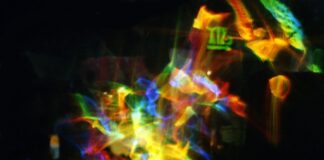AI in fashion trade shows is rapidly transforming how brands connect, exhibit, and engage, and understanding how AI will change the fashion trade shows is no longer optional. The role of AI in fashion trade shows has become increasingly prominent, and how AI will change the fashion trade shows is a central theme in conversations across the global fashion industry. As technology redefines physical and virtual exhibitions, from intelligent matchmaking to predictive analytics, those who grasp how AI will change the fashion trade shows will be better equipped to lead in an increasingly competitive marketplace. In this article, we explore 10 critical ways AI is reshaping fashion trade shows and why staying ahead of these developments is crucial for success.
1. AI-Driven Visitor Personalization
One of the most notable advancements in fashion trade shows is the use of AI for personalizing the attendee experience. Gone are the days of generic booth layouts and one-size-fits-all engagement. With AI, trade show organizers and fashion brands can tailor each visitor’s experience based on past interactions, digital behavior, and personal preferences.
AI-powered recommendation engines can suggest which booths to visit, sessions to attend, and products to explore. This not only enhances the attendee experience but also increases engagement for exhibitors. Personalized agendas created through machine learning models help maximize the value of time spent at the event. As personalization becomes a standard expectation, leveraging AI is now essential.
2. Predictive Analytics for Strategic Planning
AI’s ability to analyze large datasets makes it indispensable for strategic planning in fashion trade shows. Predictive analytics can help organizers and exhibitors forecast attendance numbers, identify peak engagement times, and estimate the success of product launches.
For instance, AI can evaluate past trade show data to anticipate which designs or collections will generate buzz. Exhibitors can use this data to decide on optimal booth locations, marketing budgets, and staffing needs. Strategic decisions grounded in AI insights reduce uncertainty and increase ROI, making AI a vital tool in the modern trade show ecosystem.
3. Intelligent Lead Generation
One of the most valuable outcomes of attending a fashion trade show is acquiring qualified leads. AI excels in capturing, qualifying, and nurturing these leads. Tools powered by natural language processing (NLP) and machine learning can scan attendee badges, analyze social media interactions, and interpret conversations to identify high-potential buyers.
Moreover, AI can instantly rank leads based on buying intent and product alignment. Rather than collecting business cards and following up days later, sales teams can act in real time, closing deals faster. The efficiency and precision of AI in lead generation is game-changing.
4. Virtual Trade Shows and Hybrid Events
AI is the backbone of virtual and hybrid fashion trade shows. When the global pandemic forced the industry to rethink in-person events, AI-enabled platforms stepped in to recreate immersive experiences online. From virtual booths to AI-powered matchmaking algorithms, attendees can now connect with brands from anywhere in the world.
AI supports features like real-time language translation, voice assistants, and 3D modeling of fashion collections. These tools are essential in bridging the gap between physical and digital engagement. With sustainability and accessibility becoming more important, hybrid models supported by AI are here to stay.
5. Chatbots and Conversational AI
AI-powered chatbots are revolutionizing customer service at fashion trade shows. These bots can answer visitor questions, provide information about products, direct attendees to booths, and even schedule meetings — all without human intervention.
Powered by NLP, these chatbots are available 24/7 and continuously learn from interactions to improve accuracy. This ensures a seamless experience for attendees and reduces the burden on human staff. In high-traffic events, chatbots are a scalable solution for providing immediate and personalized support.
6. Real-Time Sentiment Analysis
Understanding how attendees feel about your brand, collection, or booth in real time is incredibly powerful. AI makes this possible through sentiment analysis of social media posts, live surveys, and facial expression recognition.
For example, AI can scan Twitter or Instagram hashtags related to the fashion trade show and categorize sentiment as positive, neutral, or negative. This data enables brands to make adjustments on the fly — whether it’s changing display arrangements, updating messaging, or redirecting resources to more successful areas. Real-time feedback loops powered by AI increase responsiveness and boost outcomes.
7. Enhanced Visual Merchandising Through AI
Visual merchandising at trade shows is critical for attracting and engaging attendees. AI contributes by analyzing attendee behavior to determine which displays are most effective. Cameras and sensors equipped with AI can track dwell times, facial expressions, and movement patterns.
This data provides insights into what resonates with the audience and what doesn’t. Brands can use these insights to fine-tune layouts, color schemes, and product placements. The result is a visually optimized booth that draws attention and leaves a lasting impression.
8. AI-Assisted Content Creation and Marketing
Marketing for fashion trade shows is undergoing a shift thanks to AI. AI tools can generate copy, design promotional materials, create social media posts, and even develop targeted advertising campaigns. By analyzing data on demographics, interests, and engagement trends, AI can help brands tailor their messaging with surgical precision.
AI content tools ensure that your promotional materials are both timely and relevant, increasing conversion rates and attendance. Additionally, AI can analyze what types of content (e.g., video, carousel posts, infographics) perform best, allowing marketers to double down on high-performing formats.
9. Inventory Management and Demand Forecasting
One of the overlooked but vital areas AI impacts is inventory planning for fashion trade shows. Brands often showcase collections with the intent to take orders on-site or soon after. AI can predict demand by analyzing previous sales data, current market trends, and customer feedback.
This means brands can prepare the right number of samples, price points, and promotional materials. Reducing overstock and minimizing underpreparedness not only saves costs but also improves the buyer experience. Accurate forecasting is one of the most cost-efficient benefits AI brings to fashion trade shows.
10. Post-Event Analytics and ROI Evaluation
The impact of a fashion trade show extends beyond the event itself. Post-event analysis is critical for understanding what worked and what didn’t. AI enables detailed performance reporting by aggregating data from multiple sources — including foot traffic, social media metrics, sales conversions, and lead engagement.
AI dashboards present these insights in digestible visual formats, making it easier for decision-makers to evaluate ROI. Lessons learned through AI-driven post-event analysis can be used to refine strategies for future shows, creating a continuous loop of optimization.
Conclusion
AI is not just an enhancement for fashion trade shows — it’s becoming a necessity. From AI-driven personalization to post-event analytics, every aspect of the trade show experience is being optimized by machine learning and automation. Understanding how AI will change the fashion trade shows is essential for brands, designers, and organizers who want to stay competitive in a rapidly evolving industry.
By embracing AI, fashion professionals can deliver more engaging, efficient, and personalized experiences that delight attendees and boost business outcomes. Those who ignore this shift risk falling behind as the rest of the industry moves forward.














